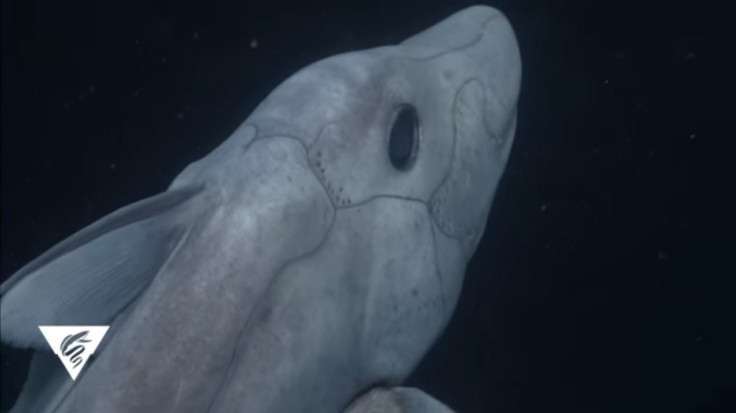What Is A Ghost Shark? 4 Facts About The Scary-Looking Chimaera

The ghost shark’s name is appropriate in more ways than one — not only does the shark look ghastly, but it is also elusive and hard to spot in its natural habitat.
It’s also known as a chimaera or ratfish. Scientists released video of the marine animal some months ago, which had been shot a few years earlier, and it was believed to mark the first time candid footage of the creature alive in the wild had been documented. The footage from the Monterey Bay Aquarium Research Institute in California shows a type of ghost shark swimming near a rocky seafloor. Specifically, the institute said the ghost shark is likely a pointy-nosed blue chimaera, official name Hydrolagus trolli.
“Like the chimaera from Greek mythology, which had a goat’s head, a serpent’s tail and a lion’s body, chimaeras are pretty weird looking,” the institute said.
Indeed, in the video footage, the ghost shark’s eyes look lifeless and its skin looks stitched together like Frankenstein’s monster or like a decorative pattern on a cowboy boot. In reality, the lines that cut through its exterior and the dots that accent those lines might serve a sensory purpose.
There’s still a lot to be learned about ghost sharks, as they have not been observed much in the wild and many of their species have been discovered only in recent years. Here’s some of what we know so far.
Its sexual organs are on its head
Not only that, they are retractable. National Geographic reported the males have a sex organ on their heads with hooks — and clasps coming out of their midsections — that could possibly be for holding onto their female mate during the act. Those claspers on their sides are shaped like spoons and the one on their heads is shaped like a thumb, the University of Florida notes.
Read: Sharks Have More Friends Than You
It may be closer than we think
At the time scientists caught the pointy-nosed blue chimaera on video, it previously had been observed only in the southwestern Pacific Ocean in the neighborhood of Australia and New Zealand, the Monterey institute said. But the footage was shot in the Northern Hemisphere around California’s Monterey Bay. The type of seafloor in that area is different from where it was previously found: rocky around Monterey Bay as opposed to sedimented in the southwestern Pacific.
Females are sperm banks
Scientists studying some species of ghost sharks recently found females had two uteruses and two sets of ovaries, something that is not uncommon in sharks. But National Geographic reported they also found those females were storing sperm in their reproductive tract for later. The experts suggested they may be holding onto the sperm up to three years, as such a time period has been observed in another type of shark, the bamboo shark.
Read: This Erupting Volcano Full of Shark Is Real, Not a Movie
They aren’t like other sharks
Ghost sharks have things in common with their brethren, like skeletons made of cartilage instead of bone. But there are differences as well, such as how they chew. Most sharks have “conveyor belt rows of teeth,” the institute said, but ghost sharks have “nonreplaceable tooth plates composed of dense minerals, and an upper jaw that is fused to their skull.” It’s the difference between sharp teeth that can take on big prey and a flat surface that crushes smaller prey.
© Copyright IBTimes 2024. All rights reserved.





















